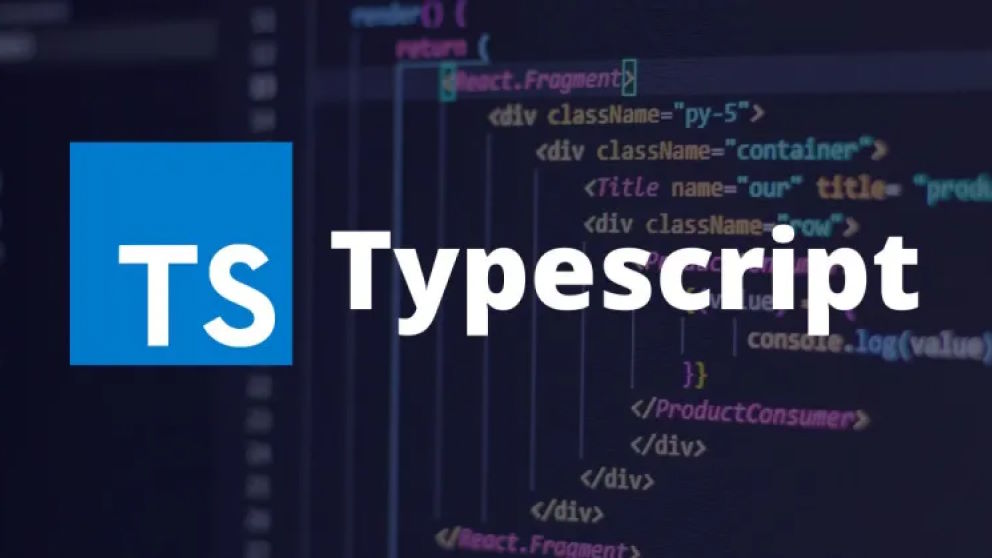Typed, Transpiled, Compiled
 Ani
Ani
If you've ever coded for the web, chances are you've touched JavaScript. But as apps get more complex, you might run into its quirks. That’s where TypeScript and AssemblyScript come into play.
It all began in the wild early days of the internet, back in 1995, when web pages were mostly just static documents. Plain text, maybe some images, and a lot of reloading. Netscape, one of the first web browsers, wanted to make the web more dynamic, so they asked a guy named Brendan Eich to come up with a scripting language for browsers.

Brendan, in what now sounds like a myth, wrote the first version of JavaScript in just 10 days. It was a scrappy little language, originally called Mocha, then LiveScript, and finally JavaScript. Not because it had much to do with Java, but because marketing thought the name sounded cool and can probably piggy back the popularity of Java. Brendan later founded Mozilla and now Brave browser.
Despite its rushed beginnings and quirks, JavaScript exploded in popularity. It let developers add interactivity to websites. Things like pop-ups, form validation, dropdown menus, and animations. Over time, it evolved. In 1996, it got standardized as ECMAScript. In 2009, it broke free from the browser thanks to Node.js, which let JavaScript to run on servers too.
By the early 2010s, JavaScript was everywhere. But as applications got bigger, teams started to struggle. It was just too easy to make mistakes. Misspell a variable, call a method on undefined, or forget what type something was supposed to be. That’s where TypeScript enters the picture.
In 2012, Microsoft added types to JavaScript. That’s how TypeScript was born. A superset of JavaScript that brought optional static typing, interfaces, and better tooling. It was spearheaded by Anders Hejlsberg, the same guy who created C#, so it had some serious engineering power behind it.
At first, the JS community was skeptical. Why add types to a language that prides itself on being dynamic? But as apps and teams grew, so did the headaches, and TypeScript’s value became clear. Big frameworks like Angular adopted it, and eventually even the JavaScript purists warmed up to it. Today, TypeScript is used in everything from small web apps to massive enterprise systems.
But the story doesn’t stop there.
By 2018, a new frontier was opening up: WebAssembly (WASM). WASM let developers run near-native code in the browser. Fast, efficient, and portable. Languages like C, C++, and Rust were already compiling to WASM, but they weren’t easy for JavaScript devs to pick up.
That’s when AssemblyScript came into the picture. It was a community-driven project started by Daniel Wirtz, with one goal: make it easy for JavaScript and TypeScript developers to write code that could compile to WASM. AssemblyScript used TypeScript-like syntax but was stripped down to only the features that could compile safely and efficiently to WebAssembly.
Suddenly, JS devs could write high-performance math functions, image processors, or even game engines in a language they already knew, without touching C or Rust.
Of course, AssemblyScript isn’t a full replacement for JS or TS. It can’t talk to the DOM or fetch data directly. But it fits beautifully into apps that need a speed boost in specific parts.
So now, in 2025, we live in a world where:
JavaScript is the old reliable: still easy, still everywhere.
TypeScript is the modern favorite: safer, smarter, and beloved by teams.
AssemblyScript is the performance geek’s sidekick: fast, focused, and built for the WebAssembly era.

JavaScript (JS) is a dynamic, loosely-typed scripting language. It’s the backbone of most front-end (and even some back-end) apps. It runs everywhere (browsers, Node.js, Bun, Deno, etc. It’s super easy to learn. Has a huge ecosystem. It’s flexible and forgiving. However, it lacks type safety, has more runtime bugs than any other project. Large projects can get messy and extremely hard to debug due to lack of structure.
function square(n) {
return n * n;
}
console.log(square(5)); // 25
JavaScript has the richest tooling because it's been around forever.
Frameworks & Libraries
React, Vue, Svelte, AngularJS
Express.js – server-side apps
jQuery – (still around, but fading)
Three.js – 3D graphics
Build Tools
Webpack
Vite
Parcel
Rollup
Testing Tools
Jest
Mocha
Cypress (E2E)
Dev Tools
Chrome DevTools
ESLint
Prettier
Babel – transpile newer JS for older browsers
Use JavaScript when:
You want zero setup
You’re working on legacy apps
You need runtime scripting, e.g., eval or REPL
You want maximum browser compatibility

TypeScript (TS) is a typed superset of JavaScript. It adds static typing, interfaces, enums, and more. All compiled down to JavaScript.
It catches errors at compile time. Helps with auto-complete, refactoring, and documentation. Works with existing JS code and it’s great for large projects. There’s a slight learning curve if you're new to typing. It requires a build step (using tsc) and is slower iteration for quick scripts.
function square(n: number): number {
return n * n;
}
console.log(square(5)); // 25
// console.log(square("5")); // ❌ Compile-time error
TypeScript is super popular in modern frontend and backend development.
Frameworks (TS-first or TS-friendly)
Next.js – full-stack React
Remix – modern web app framework
NestJS – backend framework (like Angular for backend)
tRPC – type-safe APIs
TypeORM / Prisma – typed database ORM
Build Tools
tsc – official TypeScript compiler
Vite – works great with TS
esbuild – super fast bundler
SWC – Rust-based compiler used in Next.js
Testing Tools
Same as JS, but with type support:
Jest (with TS config)
Vitest (Vite-native testing)
ts-node (run TypeScript directly)
Dev Tools
TypeScript Language Server (TSLS) – for autocomplete
tsconfig.json – config your compiler
Typedoc – generate docs from types
Use TypeScript when:
You're building large projects
You want safe refactoring
You work in a team
You love autocomplete and IDE help
![]()
AssemblyScript (AS) looks like TypeScript but compiles to WebAssembly (WASM), which runs at near-native speed in the browser or other WASM environments. It’s super fast performance for CPU-heavy tasks. Easy to learn for JS/TS devs. Compiles to .wasm easily. However, it’s not a full TS/JS replacement (limited standard lib). No DOM access (must be called from JS) and has some tooling quirks.
// assembly/index.ts
export function square(n: i32): i32 {
return n * n;
}
const wasm = await WebAssembly.instantiateStreaming(fetch("build/optimized.wasm"));
console.log(wasm.instance.exports.square(5)); // 25
AssemblyScript is younger and more niche, but growing for performance-focused devs.
Core Tools
AssemblyScript Compiler (
asc) – compile.tsto.wasmasbuild – build script tool
loader – JS loader for WASM output
wasm-bindgen / as-bind – simplify JS ↔ WASM communication
Use with:
Web projects that require native speed
Game engines (e.g., integrate into Unity, Bevy, etc.)
Blockchain smart contracts (e.g., NEAR Protocol uses AssemblyScript)
Scientific simulations or image/video/audio processing
Testing
- as-pect – testing framework for AssemblyScript
Dev Tools
WABT (WebAssembly Binary Toolkit) – inspect
.wasmfilesWasmExplorer, WasmFiddle – online WASM playgrounds
VSCode AssemblyScript Extension
Use AssemblyScript when:
You need WASM performance with JavaScript-like syntax
You're optimizing a hot loop or math-heavy function
You're building to target WebAssembly for portability
While, it seems like a natural progression with AssemblyScript being the natural step. But, we’re not quite there yet. Let’s look into a few use-cases:
Suppose we want to fetch user data from an API.
✅ TypeScript Version (works fine)
async function getUser() {
const res = await fetch("https://jsonplaceholder.typicode.com/users/1");
const user = await res.json();
console.log(user);
}
getUser();
❌ AssemblyScript Version (won’t work)
// assembly/index.ts
// ❌ No 'fetch' API available
export function getUser(): void {
// This will not compile or work
}
🛠 Workaround: You’d have to call
fetchfrom JS, then pass the result to WASM. That’s extra work and complexity.
So, you might think that typescript is all powerful then? It’s close. But javascript still has it’s value. Say, you’re building a plugin system or a browser-based REPL where users write code at runtime.
✅ JavaScript Version (works fine)
const userCode = "console.log('Hello from user!')";
eval(userCode); // ✅ Works out of the box
❌ TypeScript Version (won’t work directly)
const userCode: string = "console.log('Hello from user!')";
// eval(userCode); ❌ This only works at runtime after TS has compiled the code to JS
🛠 You’d need to compile the user’s TypeScript code to JavaScript on the fly (using Babel or TypeScript compiler API), which is overkill for simple tasks.
So, a combination is still required to get the optimal performance and scale.
Imagine you’re building a browser-based photo editor:
UI: React + TypeScript (Next.js)
Filters and image processing: AssemblyScript → WASM
Tiny plugins or runtime scripts: Plain JavaScript with
eval
You’re mixing all three to get:
✅ Scalability + ✅ Performance + ✅ Flexibility
A quick comparison:
| Feature | JavaScript | TypeScript | AssemblyScript |
| Type safety | ❌ | ✅ | ✅ (limited) |
| Browser support | ✅ | ✅ (compiled) | ✅ (compiled to WASM) |
| Speed | ⚠️ (interpreter) | ⚠️ (same as JS) | ✅✅✅ (near native) |
| Use case | Web, backend | Large apps | Performance-critical code |
| Learning curve | Easy | Medium | Medium (WASM specifics) |
| Access to DOM | ✅ | ✅ | ❌ |
So, there’s a time to type, transpile and compile afterall.
Use JavaScript if you're building a quick prototype, small scripts, or prefer minimal setup.
Use TypeScript for any medium to large project where code quality and developer experience matter.
Use AssemblyScript if you need performance (e.g. image/video processing, simulations) and want to stay in JS-like syntax land.
As we look into the future of web development, one thing is becoming crystal clear: WebAssembly isn’t just a cool experiment anymore, it’s a movement. And it’s reshaping how we think about building applications for the browser, desktop, and beyond.

WebAssembly: The Portable Runtime of the Future
Originally designed to make browser-based games and apps faster, WebAssembly is now evolving into something much bigger, something universal. It’s not just about the web anymore. WASM is showing up in:
Edge computing (like Cloudflare Workers)
Serverless runtimes (like Wasmtime and Wasmer)
Smart contracts (in chains like NEAR, Polkadot, and Internet Computer)
Plugins systems for IDEs, databases, and even game engines
The dream? Code that runs anywhere, securely and fast, no matter the host system. And AssemblyScript is well-positioned to be the “JavaScript dev’s entry point” into that world.

WebAssembly is becoming:
The universal runtime for sandboxed, fast code
The next VM target for many languages (Python, Go, Ruby are all working on WASM support)
A way to escape the browser while still using browser-native tech
And as WASM matures (with support for garbage collection, threads, and better debugging), AssemblyScript will mature alongside it. Maybe we can have a better runtime for typescript which helps push WASM beyond AssemblyScript too.
Subscribe to my newsletter
Read articles from Ani directly inside your inbox. Subscribe to the newsletter, and don't miss out.
Written by
